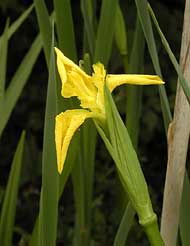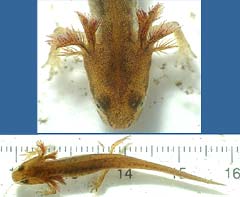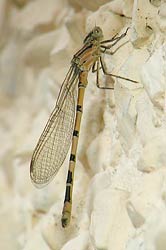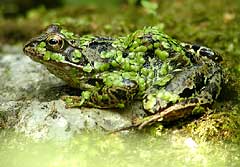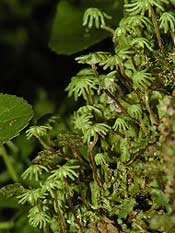Go to latest entry.....................................Go to previous entry
The water surface is now completely covered with plant growth and I hope to clear a bit of it before the end of the week. The frogs don't seem to mind the cover and their snouts can be seen peering out all over the pond.
Today I though I would just thin out a corner of the floating weed in the small pond, but the task came to a quick stop when the first handful of weed removed contained two adult newts and this young one. A product, presumably, of last year's eggs has to be the best part of one year old. It measures about 4cm in length (similar size to the ones seen at the end of March in the big pond), and, as the picture shows, still sports a full set of external gills. It illustrates how careful you need to be about doing any pond clearing when there is a newt population in a pond. Creatures like this can easily be overlooked. Fortunately I have a policy of putting any plants removed from the water straight into a white tray (old photographic developing tray - ideal for the job) so that I can check through it.
Despite its colour, I think it is a female Common Blue (Enallagma cyathigera) which my guide book says has a flight period from mid-May to October.
It doesn't help that, like this one spotted next to the small pond, they carry around the added camouflage of duckweed on them. It's quite funny to see one hop right past birds that are feeding under the Hawthorn.
The last few weeks have seen an acceleration in the growth of the Liverwort 'jungle' of male and female reproductive structures around the base of the tree stump in the centre of the big pond. Unfortunately, this year they are growing in a different spot tah is not as accessible fo photography. The 'palm trees' are the female structures (Archegoniophores) which contain eggs and the darker, flat structures near the bottom of the picture are the male structures (Antheridiophores) that produce sperm. There is more about the Liverworts in the 2001 diary. |
|
